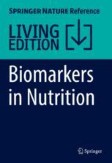Search
Search Results
-
Characterizing the toxicological responses to inorganic arsenicals and their metabolites in immortalized human bladder epithelial cells
Arsenic is highly toxic to the human bladder. In the present study, we established a human bladder epithelial cell line that closely mimics normal...

-
Candidate master microRNA regulator of arsenic-induced pancreatic beta cell impairment revealed by multi-omics analysis
Arsenic is a pervasive environmental toxin that is listed as the top priority for investigation by the Agency for Toxic Substance and Disease...

-
Enhanced Transdermal Delivery of N-Acetylcysteine and 4-Phenylbutyric Acid for Potential Use as Antidotes to Lewisite
Lewisite is a highly toxic chemical warfare agent that leads to cutaneous and systemic damage. N-acetylcysteine (NAC) and 4-phenylbutryic acid...

-
Origins, fate, and actions of methylated trivalent metabolites of inorganic arsenic: progress and prospects
The toxic metalloid inorganic arsenic (iAs) is widely distributed in the environment. Chronic exposure to iAs from environmental sources has been...

-
Exposure to inorganic arsenic and its methylated metabolites alters metabolomics profiles in INS-1 832/13 insulinoma cells and isolated pancreatic islets
Inorganic arsenic (iAs) is an environmental diabetogen, but mechanisms underlying its diabetogenic effects are poorly understood. Exposures to...

-

-
Arsenic 3 methyltransferase (AS3MT) automethylates on cysteine residues in vitro
Arsenic toxicity is a global concern to human health causing increased incidences of cancer, bronchopulmonary, and cardiovascular diseases. In human...

-
The Human Gut Microbiome’s Influence on Arsenic Toxicity
Purpose of ReviewArsenic exposure is a public health concern of global proportions with a high degree of interindividual variability in pathologic...

-
A State-of-the-Science Review on Metal Biomarkers
Purpose of ReviewBiomarkers are commonly used in epidemiological studies to assess metals and metalloid exposure and estimate internal dose, as they...

-
AAZ2 induces mitochondrial-dependent apoptosis by targeting PDK1 in gastric cancer
Drastic surges in intracellular reactive oxygen species (ROS) induce cell apoptosis, while most chemotherapy drugs lead to the accumulation of ROS....
-
Arsenite and its trivalent methylated metabolites inhibit glucose-stimulated calcium influx and insulin secretion in murine pancreatic islets
Chronic exposure to inorganic arsenic (iAs), a common drinking water and food contaminant, has been associated with an increased risk of type 2...

-
Biotransformation of arsenic and toxicological implication of arsenic metabolites
Arsenic is a well-known environmental carcinogen and chronic exposure to arsenic through drinking water has been reported to cause skin, bladder and...

-
Association between urinary arsenic concentration and genetic polymorphisms in Korean adults
Arsenic (As) is a human carcinogen widely distributed in the environment. This study evaluated the association between the urinary As concentration...

-
Autophagy as a Biomarker of Cytotoxicity
Since autophagy is involved in both cytoprotective and cytostatic/cytotoxic pathways depending on the types of stressor and culture conditions,...
-
Urinary Arsenic as a Biomarker: Speciation Analysis for the Assessment of Dietary Exposure
Chronic adverse health effects due to groundwater contamination of inorganic arsenic (iAs) has long been known in many parts of the world....
-
Urinary Arsenic as a Biomarker: Speciation Analysis for the Assessment of Dietary Exposure
Chronic adverse health effects due to groundwater contamination of inorganic arsenic (iAs) has long been known in many parts of the world....
-
Sex-specific transgenerational effects of preconception exposure to arsenite: metabolic phenotypes of C57BL/6 offspring
Chronic exposure to inorganic arsenic (iAs) has been linked to diabetes in both humans and mice, but the role of iAs exposure prior to conception and...

-
The Reducible Disulfide Proteome of Synaptosomes Supports a Role for Reversible Oxidations of Protein Thiols in the Maintenance of Neuronal Redox Homeostasis
The mechanisms by which neurons maintain redox homeostasis, disruption of which is linked to disease, are not well known. Hydrogen peroxide, a major...

-
Pulmonary pathogenesis in a murine model of inhaled arsenical exposure
Arsenic trioxide (ATO), an inorganic arsenical, is a toxic environmental contaminant. It is also a widely used chemical with industrial and medicinal...

